raspberry pi
Latest
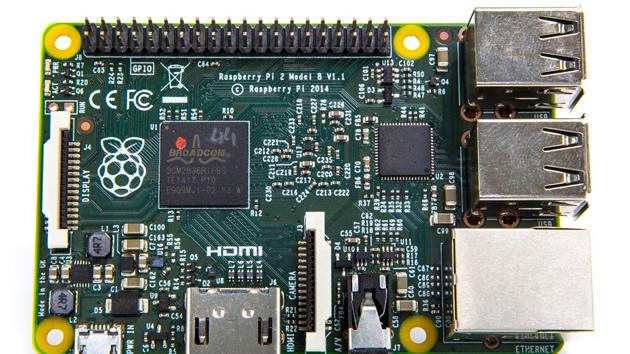
Windows 10 is coming to the Raspberry Pi 2 for free
Over the years, the Raspberry Pi has helped children learn to code and has powered many homebrew projects around the world, but some users have often lamented at the lack Windows support. Luckily, now that the Raspberry Pi 2 is here, that's all about to change. Microsoft has announced that it will support the Raspberry Pi Foundation's latest board, making a specialized version of its Windows 10 operating system available to the wider Pi community for free via its Windows Developer Program for IoT (Internet of Things).

Feedback Loop: Building PCs, running headphones and more!
The leaves are starting to change color and the air is getting cooler, signaling that fall has finally arrived. You know what else has arrived? Feedback Loop! This week's edition features the Engadget community discussing the benefits of homebuilt PCs, recommending affordable running headphones, sharing fun Raspberry Pi hacks and dishing on smartwatches. Head past the break for all this and more.

BBC launches kid coding lessons as schools increase focus on computing
This week marks a new chapter in how computing is taught in Britain's schools, with children as young as five learning how to code as part of the government's new national curriculum. With the help of hardware like the Raspberry Pi, schools are expected to help pupils understand and exercise the basic principles of computer science, giving them a basic grounding in programming and how algorithms are implemented in the devices they use every day. It's a tough task, but the BBC wants to help, so it's expanded the support materials on its Bitesize website (having already helped schoolchildren learn more about core subjects for more than 15 years) to include basic computing skills. Content will include a number of interactive games and online guides, but the BBC also intends to deliver a number of new technology-themed TV shows, 30 years after it launched its first computing initiative centred around the BBC Microcomputer. With smartphones and tablets at their disposal, younger generations are now surrounded by technology -- the government now (finally) believes it's time for them to get a better grasp of how it all works.
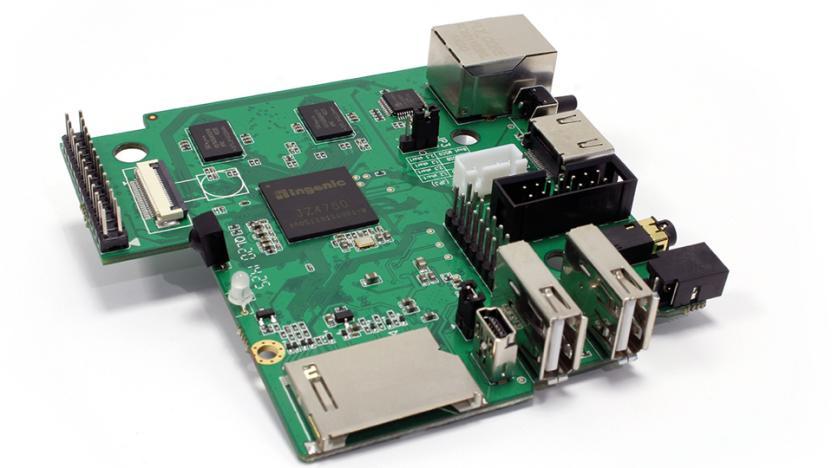
Imagination Technologies will give its 'Raspberry Pi on steroids' away for free
Grab someone in the street and ask them about Imagination Technologies and they're more likely to run away than tell you that it's the company that designs the graphics chips for Apple's mobile devices. The company is more than just the home of PowerVR, however, and bought MIPS in order to become a direct rival to ARM, its more famous UK chip-design neighbor. Now, the company has decided to produce a Raspberry Pi-style development board in the hope of taking MIPS mainstream, describing it as "Raspberry Pi on steroids." Aside from the differences in hardware and chip architecture between the two devices, there's one big change in approach: Imagination Technologies is giving its board away for free.
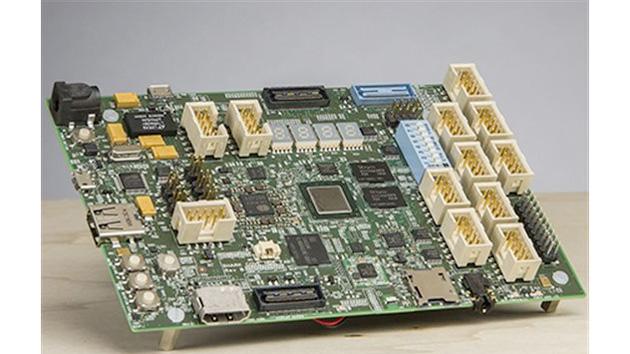
Microsoft and Intel's latest development board will cost you $300
Intel may reign supreme in the desktop and laptop space, but ARM is eating its lunch almost everywhere else. That's not something the chipmaker can ignore, which is why it's having another crack at the hobby / developer market with Sharks Cove. The board, designed with Microsoft, has the stated aim of helping developers build apps and drivers for Windows and Android devices that use Intel chips. Since it's also available for everyone else to buy, it could also be quietly positioned as a more powerful alternative to boards like Arduino and Raspberry Pi. Unfortunately, as with the NUC, there's a catch: the board will retail for $300.
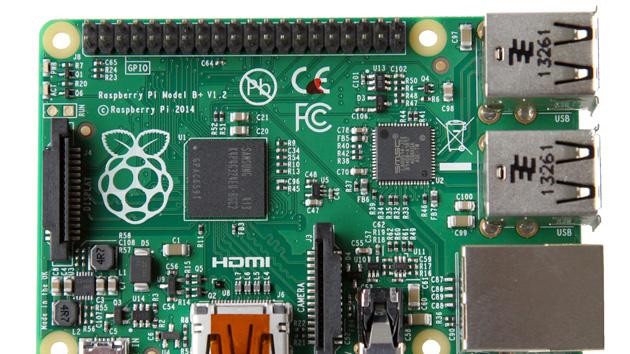
Raspberry Pi launches Model B+ with extra USB ports, microSD support
When you've got more than a few upstarts gunning for your throne, it seems wise to keep ahead of the game. That's why the Raspberry Pi foundation has announced an upgraded version of its Model B, the, uh, Model B+ -- which is described as the "final evolution" of the first-generation Raspberry Pi. The tweaked hardware now offers two more USB 2.0 ports, a microSD card reader and 14 more GPIO pins, making a total of 40 on the board. In order to achieve this, however, some sacrifices had to be made, including a new layout which promises to be both "neater," but may not fit your current cases. The outfit has also merged the composite video and audio ports into one and promises better audio, which is good, because Wolfson's audio card may no longer be supported. Thankfully, despite all of the changes, the foundation has pledged to keep the price the same both in the US and the UK. Fans of the older hardware need not worry either, as Eben Upton has pledged that the model B will continue to be manufactured for as long as the public demands it.
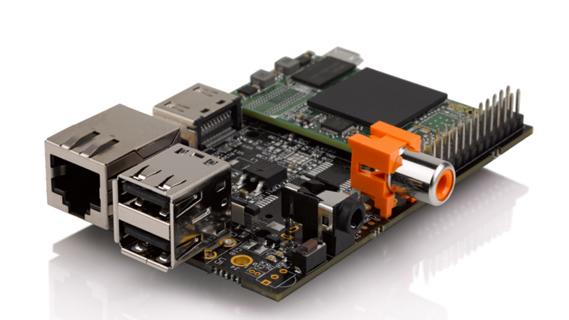
HummingBoard is a Raspberry Pi rival that lets you swap out its processor
You'd think the world of hobbyist mini computers would be full, considering that you've got a choice of Arduino, Raspberry Pi, Beaglebone and even Intel's NUC. That hasn't deterred SolidRun, which is releasing the HummingBoard as a more powerful alternative to the Raspberry Pi. Built on the same platform, the HummingBoard promises faster silicon (1GHz ARM v7 vs. 700MHz ARM v6) while fitting into the same third-party cases as its education-centric rival. It also lets you switch out the CPU and memory module, should you need some more grunt further down the road. The base unit with 512MB RAM will set you back $45 plus $10 for a power adapter, while the top-spec model with 1GB RAM and a faster chip is priced at $100.

This Apple II Raspberry Pi enclosure is incredible
Why just put that Raspberry Pi into a boring little plastic box when you can give it a classy place to live? Charles Mangin is selling these Apple II Raspberry Pi cases at his RetroConnector Etsy shop for US$115. Mangin is the same clever fellow who developed the tiny Disk II SD card reader we covered last month. The cases actually come in several varieties, including the the original Apple II, the IIe or the Platinum IIe, and it's also available in Bell & Howell "Darth Vader" Black. Put the case together with the wee Disk II SD card reader, and the result is even more pure awesomeness.

Bring voice control to your home on the cheap with a Raspberry Pi
Siri, Cortana and Google Now are all inspired by the computers that Dave Bowman, Captain Picard and Iron Man use on a daily basis. But what if you wanted to turn your home into a voice-activated haven without those sorts of resources? Well, thanks to a Princeton students Charles Mash and Shubhro Saha, you can. The pair developed Jasper, an open-source, always-on voice control system that works on a Raspberry Pi and can easily be customized for your needs. All you need is an internet connection, one of the tiny educational boards and a USB microphone and you can ask the system to do whatever your coding ability allows. All we need now is for someone to kidnap Stephen Fry or Paul Bettany so our computer has the right level of sniffy British snark in its voice. Image credit: Cryteria/Wikimedia Commons (Hal 9000)

Raspberry Pi sells 2.5 million units
The Raspberry Pi Foundation announced that it has sold 2.5 million Raspberry Pi Model B units since the device's initial launch in February of 2012. Built to encourage the teaching of computer science in schools, the Raspberry Pi is a credit card-sized computer that offers a range of features and open-source software support for hobbyist programmers. Indie developer Mojang released a free version of Minecraft for the device last year, and next month's launch of Code Club Pro will deliver curriculum training and online resources to primary school teachers worldwide. [Image: Raspberry Pi Foundation]

'Web' beta promises a modernized browser for the Raspberry Pi
The Raspberry Pi single-board computer may have started as a simple educational tool, but over the past year users have revealed it's capable of much more. From drones to smart TV hacks to supercomputers, the $35 PC can be manipulated for almost any task, and now the team behind it is working on a better web browser. Developed over the last few months with the help of open source consultants Collabora, the unimaginatively named "Web" is promising an up-to-date experience designed for the hardware's limitations and strengths alike. Future Raspbian releases will come standard with this HTML5-capable browser, promising ARMv6-optimized 2D rendering, a smooth tab experience and accelerated image and video decoding. At this point it takes some technical savvy to get online and cranking, but if you know your way around a command line then just follow these instructions.
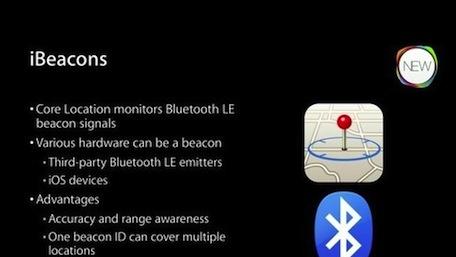
Roll your own iBeacon with a Raspberry Pi and a Bluetooth LE dongle (Updated)
Developers who want to start experimenting with iBeacons don't need to wait for hardware to show up on the market or design their own. Radius Networks has published a quick "how-to" for developers that shows how an inexpensive Raspberry Pi and Bluetooth LE dongle can be set up in a few minutes for experimentation purposes. The post, courtesy of James Nebeker and David Young, provides detailed step-by-step command-line instructions on setting up the RPi, downloading the necessary libraries, configuring the Bluetooth dongle and creating the necessary start and stop scripts. And with that, you can start designing the future with Apple's iBeacon technology. Update: Reader Jason Goldsmith tweeted that "You can also use any BT LE iOS device as an iBeacon, so iOS to iOS beacons are possible." That provides another way for developers to test out the Apple technology, although it's not as much fun...

Apple TV hacker discovers how to add custom sites on older firmware
David Schuetz, an Apple TV hobbyist, has been exploring some interesting behavior on pre-iOS 7 Apple TVs. After a bit of hacking, he discovered a way to enable an Add Site feature. This feature opens the possibility of adding custom sites to the Apple TV menu, letting him hook up a Raspberry Pi media server to his ATV. [The iOS 7-equivalent build of the Apple TV OS, released in September, is version number 6, as the ATV is a version number behind the iPhone and iPad. This hack works on v5.x and earlier-build Apple TVs. -Ed.] He wrote up the details of his discovery on his company website and posted a Github repository containing a talk he recently gave on the subject. Although Schuetz points out the hack does not require a jailbreak, this approach is not suitable for either the weak of heart or (currently) those who have upgraded to the latest Apple TV firmware. Although I suspect the Add Site button is meant for Apple's internal development team and not planned for eventual public use, it's pretty cool stuff. A video demo follows.

Earth, as seen by Raspberry Pi camera attached to weather balloon
The Raspberry Pi camera has been out for less than two weeks, and it's already skirted the final frontier. Armchair astronaut Dave Akerman strapped the $25 shooter to the equally inexpensive Raspberry Pi, put it inside a protective case shaped like the berry that inspired the product's name, and then attached it to a weather balloon. Three hours and quite a few vertical miles later, his experiment was recovered by a stranger not too far from the launch site, who called the phone number written on the side of the Linux powered microcomputer. The resulting photos are beautiful (see more at the source link), and required no help whatsoever from NASA.

Google AirShow streams Google I/O live from several RC blimps (hands-on video)
Yes, there's a fleet of camera-equipped, remote-controlled blimps live-streaming a bird's-eye view of Google I/O on YouTube, right now. It's called Google AirShow and it's taken over the airspace within Moscone Center. We briefly chatted with Chris Miller, a software engineer with AKQA (the company that put the dirigibles together for Google), about the technology used in each aircraft. It all begins with an off-the-shelf model airship that's flown manually via standard a 2.4GHz radio. Each blimp is outfitted with a servo-controlled USB camera and 5GHz USB WiFi dongle which are both connected to a Raspberry Pi board running Debian, VLC and Python. A custom-designed Li-polymer battery system powers the on-board electronics. The webcam encodes video as motion-JPEG (720p, 30fps) and VLC generates a YouTube-compatible RTSP stream that's broadcast over WiFi. Python's used to pan the servo-controlled camera via the Raspberry Pi's PWM output. The result is pretty awesome. But don't just take our word for it -- check out the gallery and source link below, then watch our hands-on video after the break. %Gallery-188534%

Raspberry Pi camera module comes to the UK May 14th, lands early for some (updated)
Remember that Raspberry Pi camera module we wrote about a few months ago? It looks like UK-based electronics retailer CPC / Farnell will start taking orders for the shooter on May 14th. Users on the Raspberry Pi forums who signed up for info about the camera module have received an email from the retailer inviting them to order. As a reminder, the five megapixel fixed-focus shooter -- which only measures 25 x 20 x 9mm -- can snap 2,592 x 1,944-pixel images and capture video at 1,080p (30fps), 720p (60fps) and VGA (60 or 90fps). While the accessory is expected to cost about $25, there's no actual pricing details on CPC / Farnell's website. Wanna see the camera module in action? One lucky Raspberry Pi user's received the device early and shared a video -- check it out after the break. Update: As promised, the boards are now officially available to order per a blog post on the Raspberry Pi website. And the price is indeed $25. Hit the source link for a list of commands needed to activate the add-on, or check after the break for another video demonstrating the setup process and some PR explaining Element 14's competition to promote the Pi and its camera. [Thanks, HaloBlu]

Minecraft Pi Edition is available now for free consumption
The miniature $35 Raspberry Pi computer, as pictured above, can play Minecraft as of today, satiating the three-month wait of eager Pi users. Mojang's buildamajig is available to download from the game's Rasperberry Pi blog, with instructions there for how to set it up.The Pi Edition, as it's dubbed, supports multiple programming languages, and can be yours for a grand total of zip, nada, and niente i.e. it's free.

Google Giving helps bring 15,000 Raspberry Pi units to UK school children
It's not every day your class gets a visit from a tech bigwig like Eric Schmidt. Google's executive chairman paid a visit to a UK school, alongside Raspberry Pi co-founder Eben Upton. The duo were there to talk code, an appearance that coincided with the announcement that a grant from Google Giving will be bringing 15,000 Raspberry Pi Model Bs to kids in that country. The companies will be working alongside six educational partners to decide precisely whose hands those little computers will end up in. More info on the program can be found in the source link.

Using a Raspberry Pi to make an AirPlay speaker
If you're one of those people who loves to tinker with stuff and try to create functional equipment in unconventional ways, then you'll appreciate what blogger Jordan Burgess did -- he made an AirPlay speaker receiver out of a Raspberry Pi. For those who haven't seen me waving my Raspberry Pi in front of the camera on TUAW TV Live, it's an amazing little single-board Linux machine that sells for about $35 (Model B). Burgess wanted to bring his "good, but dated speaker system into the 21st century by enabling wireless streaming of music to it." Sounds like the job for an AirPort Express ($99) or an Apple TV ($99), doesn't it? Well, Burgess didn't need another wireless router, nor did he need the video features of the Apple TV. And if he bought AirPlay-enabled speakers, he'd be paying at least $325 or so for a decent set. So Burgess took his existing Raspberry Pi Model B, added a 2 GB SD card (that's what the Raspberry Pi uses for storage) and a cheap USB WiFi adapter and turned it into an AirPlay speaker receiver. Burgess doesn't think the sound is audiophile quality, although a commenter on Lifehacker noted that the sound quality is "*fantastic*." Are any other TUAW readers using a Raspberry Pi as a hobby machine? If your hacks are somehow related to Apple, we'd love to hear from you. Raspberry Pi is a trademark of the Raspberry Pi Foundation [via Lifehacker]

Use Siri and a Raspberry Pi to open your garage door with your voice
Siri can already be used to complete some pretty nifty tasks, including fetching sports scores or directions across town, but having the virtual assistant manipulate things in your physical space is something entirely different. As Hack A Day reports, by combining some special Siri software with an ultra-cheap Raspberry Pi computer, forum goer DarkTherapy has come up with something truly brilliant. Using a program called SiriProxy to allow the iPhone to speak directly to the Raspberry Pi, the tiny computer remotely controls a relay that is then hooked up to an automatic garage door system. Once all the legwork is completed, simply asking Siri to open the garage door is all it takes to set the process in motion. You can check out all of DarkTherapy's code and detailed instructions on the Raspberry Pi forums.










